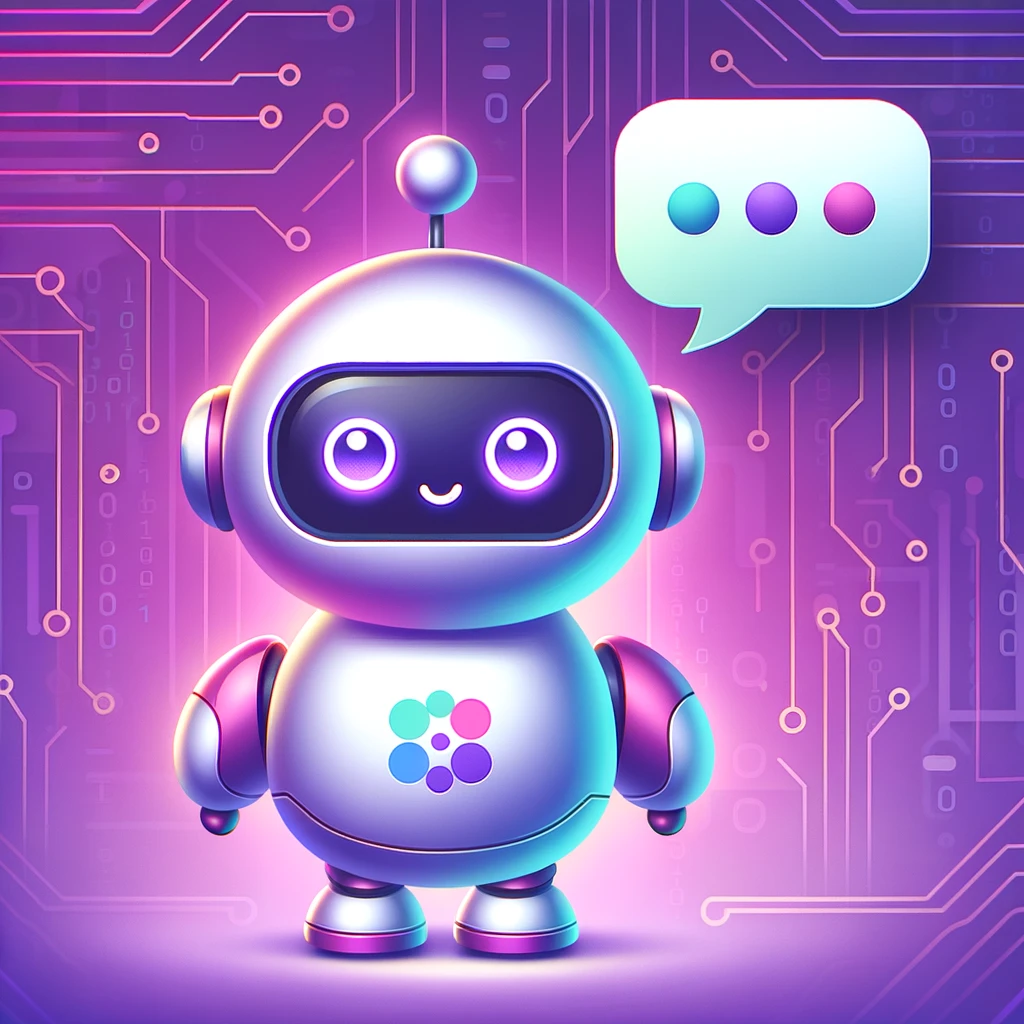


Building a basic chat bot using Remix, highlighting the integration of different language model service providers through langchain, allowing flexibility in managing conversational interactions within the app.
In this article we will show you how easy it is to build a simple chat bot with Remix. The code for this demo app is available on GitHub. It is best clone this app and follow along from there, as I am not going to cover all of the details of getting setup with remix in this article. Nor will I go in depth on the UI components, though I encourage you to check out the template project that I used, by @EvanMarie.
Getting Started
Clone the project and do npm install. You can now run the project with npm run dev.
The Simplest Chat Bot
The first implementation is a very simple conversational chat bot. It will responed to every statement the user makes. We will be using langchain, as its integrations do reduce the amount of boilerplate code we need to write. In this project, you can easily switch between different LLM service providers, OpenAI, TogetherAI, and DeepInfra. There are many others that can quickly be hooked up to langchain, but these are the ones included in the demo.
For DeepInfra, there is no built-in integration for langchain. Instead, this is included as a util in this project. You can see the code for this in /app/lib/server-utils/deepInfraLangChain.ts. (Note that as of this writing, there is an error in the langchain code that needs to be fixed in order for the deepInfra code to work. I have submitted a pull request for this very simple fix, and I expect it to be merged soon. If you get errors, please stick to the OpenAI and TogetherAI integrations for now.)
The route for this first implementation is at /chat, and the code can be found in /app/routes/chat/index.tsx. This file contains the following code:
import Flex from "~/components/buildingBlocks/flex";
import ChatComponent from "./components/chatComponent";
import { ChatLoaderData, chatLoader } from "./loaders/chatLoader";
import { chatAction } from "./actions/chatAction";
import { useLoaderData } from "@remix-run/react";
export const loader = chatLoader;
export const action = chatAction;
export default function Chat() {
const { messages } = useLoaderData<ChatLoaderData>();
return (
<Flex className="w-[45vw] hidden xl:flex items-center">
<ChatComponent messages={messages} />
</Flex>
);
}This code is pretty simple. It uses the chatLoader to get the messages from the server, and then passes them to the ChatComponent to render them. Meanwhile, inside the chat component is a form that results in a POST request to the server, which is answered by the chatAction above. The chatAction is defined in /app/routes/chat/actions/chatAction.ts and looks like this:
import { ActionFunctionArgs, json } from "@remix-run/node";
import { TogetherAI } from "@langchain/community/llms/togetherai";
import { ChatTogetherAI } from "@langchain/community/chat_models/togetherai";
import { ChatOpenAI } from "@langchain/openai";
import {
ChatPromptTemplate,
MessagesPlaceholder,
} from "@langchain/core/prompts";
import { StringOutputParser } from "@langchain/core/output_parsers";
import { AIMessage, HumanMessage } from "@langchain/core/messages";
import { RedisChatMessageHistory } from "@langchain/community/stores/message/ioredis";
import { redis } from "~/lib/server-utils/redis.server";
import { ChatDeepInfra } from "~/lib/server-utils/deepInfraLangChain";
import {
getSessionIdFromRequest,
setSessionIdOnResponse,
} from "~/lib/server-utils/session";
import { v4 as uuid } from "uuid";
export const chatAction = async ({ request }: ActionFunctionArgs) => {
const sessionId = (await getSessionIdFromRequest(request)) || uuid();
console.log("session id", sessionId);
// you can use the OpenAI, TogetherAI or DeepInfra models. Just copy and
// paste the name of the model you want to use below. A number of examples are shown.
// const chatModel = new ChatOpenAI({
// const chatModel = new ChatTogetherAI({
const chatModel = new ChatDeepInfra({
//modelName: "Gryphe/MythoMax-L2-13b", // deepinfra
//modelName: "gpt-4-turbo-preview", // openai
temperature: 0.8,
//modelName: "NousResearch/Nous-Hermes-2-Mixtral-8x7B-DPO", // together
//modelName: "snorkelai/Snorkel-Mistral-PairRM-DPO", // together
//modelName: "Qwen/Qwen1.5-72B-Chat", // together
//modelName: "upstage/SOLAR-10.7B-Instruct-v1.0", //together
//modelName: "DeepInfra/pygmalion-13b-4bit-128g", // deepinfra
//modelName: "lizpreciatior/lzlv_70b_fp16_hf", // deepinfra
modelName: "cognitivecomputations/dolphin-2.6-mixtral-8x7b", // deepinfra
});
const prompt = ChatPromptTemplate.fromMessages([
[
"system",
`You are a helpful assistant, having a conversation with a user. You can help the user with a variety of tasks, such as answering questions, providing information, or assisting with tasks. You are friendly, polite, and professional. You are knowledgeable and can provide accurate information. You are patient and understanding, and you can help the user with any questions or concerns they may have. You are here to help the user and provide them with the information they need.`,
],
new MessagesPlaceholder("chat"),
]);
const messageHistory = new RedisChatMessageHistory({
sessionId: `dv-chat:${sessionId}`,
client: redis,
url: process.env.REDIS_URL,
});
const formData = await request.formData();
const chatInput = formData.get("chatInput");
const chatMessage = new HumanMessage(chatInput as string, {
timestamp: new Date().toISOString(),
});
const outputParser = new StringOutputParser();
await messageHistory.addMessage(chatMessage);
const messages = await messageHistory.getMessages();
const response = await prompt
.pipe(chatModel)
.pipe(outputParser)
.invoke({ chat: messages });
await messageHistory.addMessage(
new AIMessage(response, { timestamp: new Date().toISOString() })
);
console.log("reponse", response);
const responseJson = json({ response });
return await setSessionIdOnResponse(responseJson, sessionId);
};Let's break this down. The chatAction function is an async function that takes an ActionFunctionArgs object as an argument. This object contains the request object, which we use to get the form data from the POST request. We then create a new HumanMessage object from the chat input, and add it to the message history.
We are using another langchain integration that uses redis as the backing store for our messages. This is very fast and convenient. All we have to do is provide a key to the chat conversation, which we get from the sessionID found in the cookie, or we create one if there is not one already. We append the new message to the history, and then retrieve the full history from redis.
These messages are passed to the prompt template, which then passes a complete prompt that includes the conversation history as well as the system prompt. We use a string output parser so that our response is just the text content returned by the llm. We then add the new message to the message history, returning the response as a JSON object. We also set the session ID on the response, so that the session ID is stored in the cookie for the next request.
After the action completes, remix revalidates all of the loaders, and so our loader only needs to retrieve the message history from redis and return it. This is done in the chatLoader function, which is defined in /app/routes/chat/loaders/chatLoader.ts and looks like this:
import { LoaderFunctionArgs, json, redirect } from "@remix-run/node";
import { AIMessage } from "@langchain/core/messages";
import { RedisChatMessageHistory } from "@langchain/community/stores/message/ioredis";
import { redis } from "~/lib/server-utils/redis.server";
import {
getSessionIdFromRequest,
setSessionIdOnResponse,
} from "~/lib/server-utils/session";
import { v4 as uuid } from "uuid";
export const chatLoader = async ({ request }: LoaderFunctionArgs) => {
const searchParams = new URLSearchParams(request.url.split("?")[1]);
const clearHistory = searchParams.get("clearHistory");
console.log("clear history", clearHistory);
// clear history by changing the session id, keeps the chat in database, but
// clears it for user.
const sessionId = !clearHistory
? (await getSessionIdFromRequest(request)) || uuid()
: uuid();
if (clearHistory) {
const response = redirect("/chat");
return await setSessionIdOnResponse(response, sessionId);
}
const messageHistory = new RedisChatMessageHistory({
sessionId: `dv-chat:${sessionId}`,
client: redis,
url: process.env.REDIS_URL,
});
//await messageHistory.addMessage(new AIMessage("Hello!"));
let messages = await messageHistory.getMessages();
if (messages.length === 0) {
messageHistory.addMessage(
new AIMessage(
"Hello! I'm Dark Violet. What can I help you with today?",
{ timestamp: new Date().toISOString() }
)
);
messages = await messageHistory.getMessages();
}
console.log(messages);
const response = json({
messages: messages.map((message) =>
message instanceof AIMessage
? {
type: "ai",
text: message.content,
timestamp: message.additional_kwargs.timestamp,
}
: {
type: "human",
text: message.content,
timestamp: message.additional_kwargs.timestamp,
}
),
});
return await setSessionIdOnResponse(response, sessionId);
};
export type ChatLoaderData = {
messages: { type: "ai" | "human"; text: string; timestamp: string }[];
};This loader also accommodates a request parameter that will clear the chat history for that conversation and start a new chat. The loader also retrieves the session ID from the cookie, or creates a new one if it does not exist. It then retrieves the message history from redis, and if there are no messages, it adds a welcome message to the history. The messages are then returned as a JSON object, along with the session ID set on the response.
And that's it! You now have a simple chat bot that will respond to every statement the user makes. You can easily switch between different LLM service providers by changing the chatModel variable in the chatAction function. This is a great starting point for building more complex chat bots with Remix.
In the next article, we will show you how to build a more advanced chat bot that implements RAG (Retrieval Augmented Generation) and other features.